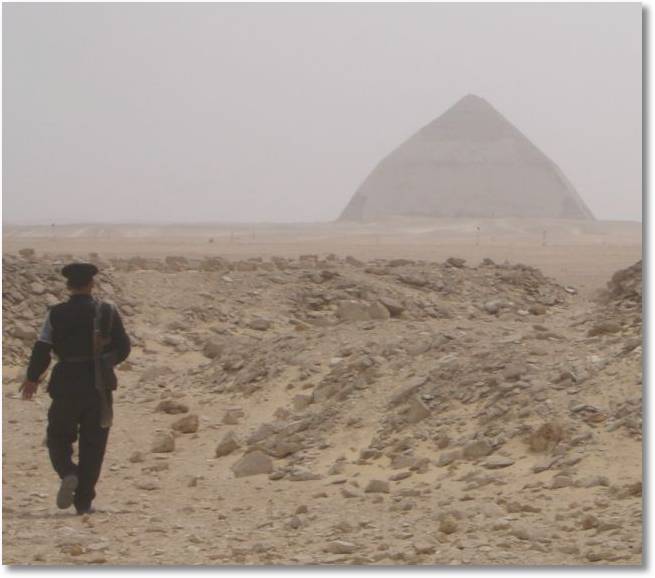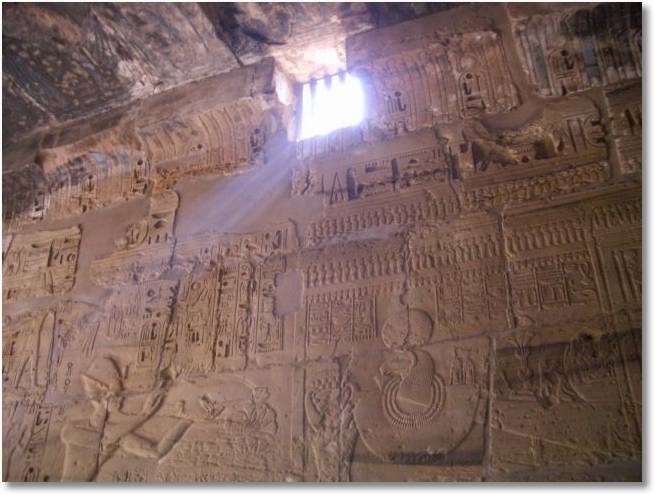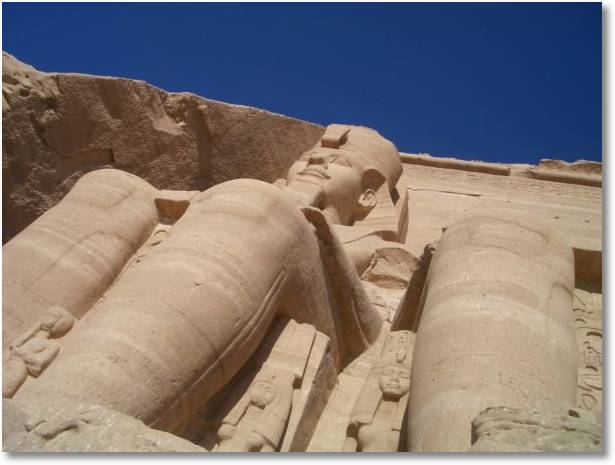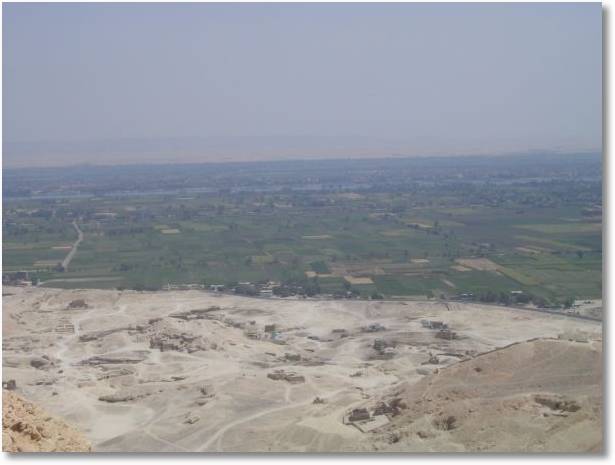Welcome to what used to be Egypt
Egypt was the center of a great civilization. That was a loooong time ago.

In fact, it is the time factor that makes the ancient Egyptian civilization so impressive. The Roman Empire came into being around two thousand years ago. By then, Egypt had already been going for about four millennia. That’s amazing. While other parts of the world were still hunting with sticks and using stupid-sounding words like “blog,” Egypt was organized, developed, and building architectural achievements that would amaze us to this day.
Modern Egypt is another story: it has problems. Unemployment is around 25%, and those who are employed don’t do so well. The police carry AK-47s and spend most of their time begging for tips, or baksheesh, from tourists. In fact, while maybe not everyone in this country is a beggar or thief, at times it seems like that. The country as a whole gets ridiculous amounts of international aid, mostly from America, so it literally starts from the top.
To enjoy Egypt, the first thing to do is to get the hell out of Cairo as soon as possible. It is a dirty, unbreathable, traffic-clogged, people-clogged, noisy mess. My first reaction upon arriving was “ugh.” The airport is a ways out of the city, and although there is a public bus to downtown, it is not easy to find in the poorly signed airport, and to get there you need to traverse a gauntlet of hasslers trying to offer taxis and hotel rooms, at what will always turn out to be a too-high price. After wandering for a while trying to decipher the Arabic signs and arrows pointing to nowhere, I ended up caving in and paying an exorbitant amount for a taxi. The drivers of course tried to divert me from my hotel to one of their choosing, but I stuck to my guns. After checking in, I decided to do some exploring. I should have just gone to bed.
A white tourist in Egypt stands out like a bulls eye to the hasslers and hustlers and thieves. Within ten seconds of leaving a hotel, you will hear “Yes, hello, where you from? You buy? Good price!” I don’t mind the hard sell, but it bothers me when they lie and cheat. In Turkey, a carpet salesman may misrepresent the value of a rug, but in Cairo a tout will pretend to be a museum official. Many street hustlers will act as if they just want to help and be your friend, then ten minutes later the twist comes as they divert you into a store owned by their buddy, or offer to tour-guide for you, or any one of a million scams. Hustlers will try to charge you extra money for a part of a monument when you’ve already paid the admission for the whole place. They will stand outside your hotel and tell you it is full, to get you into theirs. They will tell you the museum is closed for the next hour, but “Why don’t you come to my restaurant for coffee while you wait?” And don’t even think of getting in a taxi unless you know the proper fare (The Lonely Planet guide book is useful here) and have exact change, because getting change from the drivers is pretty much impossible. These are people with permanent bruises on their foreheads from praying with their head on the ground five times a day for Allah’s help in ripping people off. As in most places, being pious does not translate into being moral.
But is it worth it?
All of this made me at times question whether it was worth coming here. Well, yes, Egypt is worth visiting if you’re in the neighborhood, but be prepared for some hassles. I mean some serious hassles.
If you can tune out modern Egypt, you can find some fascinating leftovers from ancient Egypt. The Egyptian Museum is basically a warehouse of artifacts, some labeled, many not, some still in shipping crates. There are so many things to see, it can be overwhelming and it is amazing to think about just how old everything is. None of the Egyptian art is particularly elegant in comparison to the later Greek, Roman, and Renaissance works. They’re stiff, with a childlike simplicity. Still, there is a certain abstract geometric beauty in the compositions. The drawings are not people; they are symbols of people, arranged in a perfect line, often telling a story. They seem more concerned with detail than reality. If there are two horses, you will see eight hooves, even if the legs have to be twisted in impossible ways to show them. Add to this the feeling that this art comes from one of the first real civilizations, that perhaps it was necessary before Greece or Rome could be possible, and it’s easy to be impressed.

The museum, or rather the garden in front of the museum, is also a wonderful oasis of quiet and calm amidst Cairo’s crazy chaos. Past the security check, but before the ticket office, it is quite pleasant and a great place to sit and read or write. Mostly, that’s because they don’t let the locals in. Well, they do, but with a rigorous screening. Foreign-looking tourists are waved right by, but anyone who looks vaguely Arab gets his ID checked, gets searched, gets interrogated. It’s blatant racial profiling against their own people, but considering the frequency of terrorist attacks against tourists sites here, I’m happy for it.
The Egyptian government realizes how important tourism is to its citizens’ survival, so it goes to great lengths to make tourists feel safe from terrorism (the operative word here is “feel”). This involves large squadrons of “tourist police” in jet-black uniforms, carrying massive machine-guns and flashing yellow-toothed smiles. They stand behind bullet-proof barriers, making me wish I had one. For a few Egyptian Pounds, they’ll take your picture in front of the pyramids. To reach some sites, you need to join a “tourist convoy” with a police escort.
They knew how to build.
Some of the most impressive works don’t fit in the museums, of course. The pyramids, for example. I guess you’ve probably heard of them. They’re big and geometrical and really old. Really old. The desert climate and Egypt’s geological isolation keeps things around long after they would have rotted and blown away or been dismantled anywhere else.
And temples. The Egyptians really knew how to do temples, especially to the south in Upper Egypt. The Nile is lined with gigantic monuments to this pharaoh or that, to this collection of gods or another. The temples at Karnak are phenomenal in their scale. Something along the lines of the Roman Forum, but better preserved because nothing was built on top of them. 134 towering columns designed to look like papyrus plants. Colossal statues of King Ramses the Whatever, an artificial sacred lake. It only takes a little imagination to picture what it must have looked like back in the day.
Luxor Temple, the Valley of the Kings, the Colossi of Memnon, those old Egyptians sure had some major construction projects. And they did it for a long time, so there is a lot left over. It’s hard to represent in pictures just how much there is, because photos just look all yellow, and the scale can’t be captured. With the exception of those supremely photogenic pyramids of Giza, Egypt is another one of those places where a photo doesn’t show what it’s like to be there and see with your own pupils, irises, rods and cones.

The food
You know that famous Egyptian restaurant in the Upper West Side? No? Oh, that’s right, there isn’t one. Come to think of it, I don’t think I’ve ever seen an Egyptian restaurant in the U.S. I wonder – oh yeah, it’s because Egyptian food sucks. Boring falafels and schwarma that’s been turning on a spit for weeks. I hear camel meat is quite popular, though I’ve never (knowingly) tried it.
Except for a couple trips to the KFC in Cairo, I’ve been pretty much eating vegetarian in Egypt, mostly because I don’t trust the meat. A vegetarian could do all right here subsisting on falafel and koshary, but anyone squeamish about seeing meat prepared should be warned. The butcher shops hang entire cows in the doorway, with the severed head sitting on the sidewalk. The meat is usually skinned by the time it is hung, except the tail, which dangles down like a forgotten fluffy toy that the neighborhood kids come and play with. I’m well aware that the delicious red meat I enjoy comes from a real animal no matter where I am, but after watching those dangling carcasses exposed to the dust and smoke and pollution of Egyptian streets, under the hot desert sun, languishing for hours, I decided to stick with the veggies for a while.
Koshary is a popular dish. It involves a bed of rice, then some cold overcooked noodles (like mini-rigatoni), topped with lentil beans. It tastes just exactly as good as it sounds (and if that sounds good to you, you need to get out more). With enough hot-sauce, it is edible, and it’s a full meal for less than a dollar.
Supposedly there is some decent seafood in Alexandria and along the Sinai coast, but you couldn’t pay me enough to eat a Nile-caught fish.
The desert
I’m realizing lately just how much most places are defined by their geography, and Egypt is one of the more obvious examples. It is striking to see miles and miles of empty sandy nothingness, with two long, long, long and thin strips of green along where the Nile River flows.
The desert is not just sand. It’s not like a beach, where the pretty sand sits and waits for bare feet to make damp impressions. The desert is dust and wind, a mean sun and cold nights, stinging in the eyes and the need to blow your nose every five minutes to clear out the inhaled particles of Saharan shrapnel. It’s mean but beautiful, like Naomi Campbell. The desert goes forever, and it’s always different from angle to angle, from moment to moment. The desert sunset is rightly famous, and just as impossible to capture in pixels.

So there ya go
Egypt. It ain’t what it used to be, and that’s a shame. But there’s enough of what it used to be lying around to make it pretty cool, nonetheless. Can’t say I loved it, but I’m glad I stopped by.


